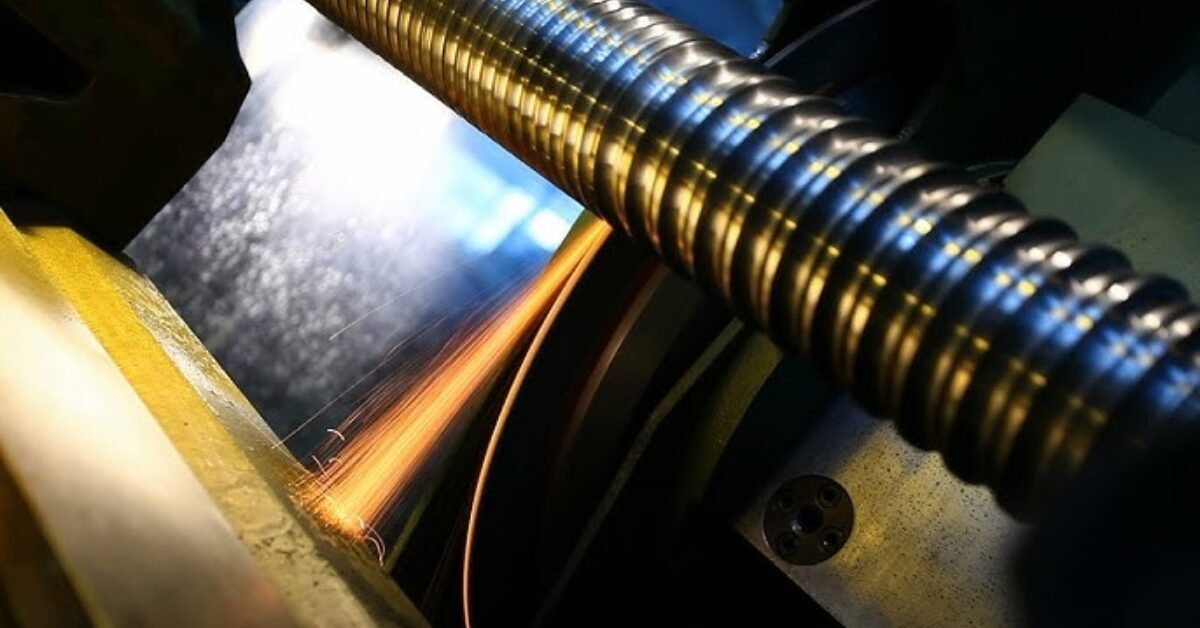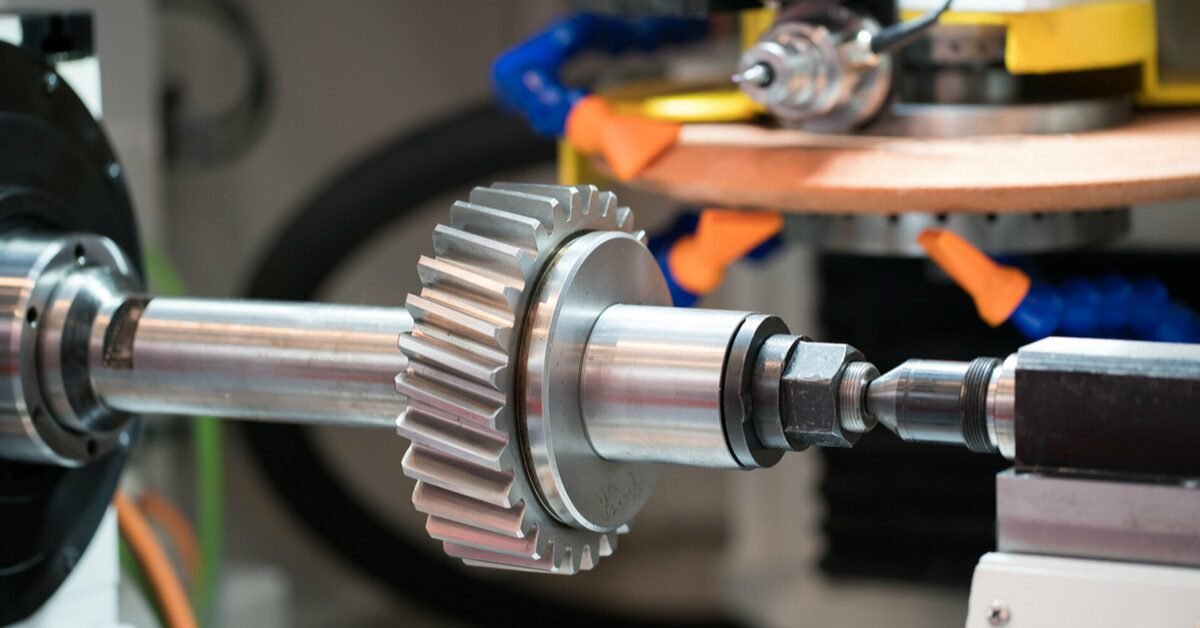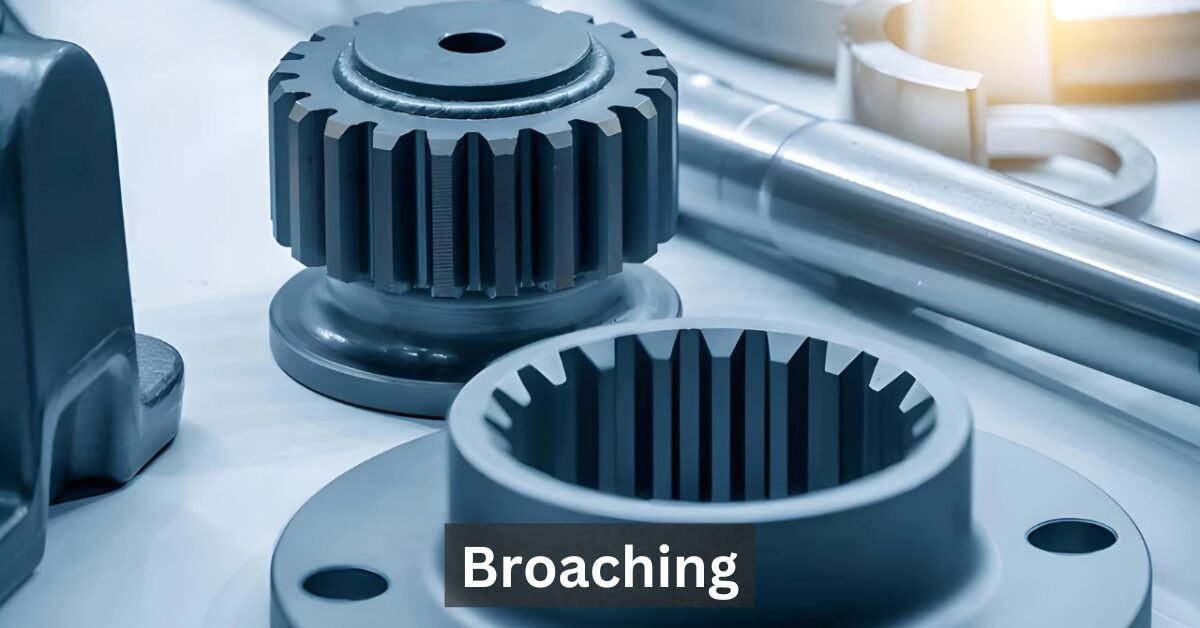Broaching is a machining process used to create precise shapes, grooves, or profiles by removing material with a specialized multi-tooth cutting tool called a broach. It’s commonly used in industries like automotive, aerospace, and medical manufacturing. From automotive components to medical equipment, broaching is integral to industries requiring tight tolerances and consistent results. This comprehensive guide explores broaching in detail, from its process and tools to applications and future trends.
Broaching is a machining technique where a toothed tool progressively cuts or shapes a material, producing precise forms like holes, splines, gears, and slots. The process is renowned for its ability to deliver high accuracy and consistent quality, making it a preferred choice for manufacturers requiring precision in large-scale production. The broach’s teeth increase in size along the length of the tool, allowing for gradual material removal. This unique design ensures a smooth surface finish and eliminates the need for secondary operations.
The versatility of broaching allows it to work on a wide range of materials, including metals like steel, aluminum, and brass, as well as composites and plastics. Its adaptability, coupled with the ability to perform both internal and external machining, ensures that broaching is an indispensable tool in modern manufacturing.
In industries where precision is paramount, broaching holds a crucial position. Its ability to produce complex and intricate shapes with minimal effort makes it invaluable for sectors such as aerospace, automotive, and medical device manufacturing. Broaching not only delivers tight tolerances but also ensures a superior surface finish, reducing the need for post-processing steps. This efficiency translates to cost savings and faster production cycles, key factors in maintaining competitiveness in modern industries.
Beyond its technical benefits, broaching also contributes to sustainability. By minimizing material waste and optimizing the machining process, it aligns with the growing emphasis on eco-friendly manufacturing practices. These qualities make broaching not just a practical choice but a strategic one for industries looking to enhance efficiency and reduce their environmental footprint.
Overview of the Broaching Process

How Broaching Works
The broaching process begins with the selection of a broach designed to match the desired shape of the finished product. The broach is mounted onto a broaching machine, and the workpiece is secured in place using a work-holding device. During operation, the broach moves linearly or rotationally against the material, with each tooth removing a small amount of material. This progressive cutting action ensures that the final shape is achieved with precision and minimal defects.
Broaching can be categorized into two main types based on the motion of the broach: linear broaching and rotary broaching. Linear broaching is the most common and involves a straight-line motion to cut the material. Rotary broaching, on the other hand, involves the rotation of the broach to create complex internal or external shapes. Both methods are highly efficient and can be tailored to meet specific manufacturing needs.
Key Components of Broaching Machines
The success of the broaching process relies on the seamless coordination of its key components. The broach tool is the centerpiece, carefully designed to match the geometry of the desired shape. Broaching machines provide the power and motion required to drive the broach, ensuring a consistent and precise operation. Workholding devices play a critical role in securing the workpiece, preventing movement during machining, and maintaining accuracy. Together, these components form a robust system capable of delivering high-quality results in diverse applications.
Types of Broaching Processes
Linear Broaching
Linear broaching is the most widely used form of broaching, characterized by the straight-line motion of the broach as it cuts through the material. It is commonly employed for internal and external machining, making it suitable for applications ranging from gear manufacturing to turbine blade machining. The versatility of linear broaching allows it to produce precise shapes, such as keyways, splines, and dovetails, with exceptional accuracy and surface finish.
Internal Broaching
Internal broaching focuses on creating shapes within a workpiece, such as holes, keyways, and splines. The broach is inserted into a pre-drilled hole, and as it passes through the material, it removes layers to achieve the desired geometry. This process is highly efficient and is often used in the automotive and aerospace industries for producing intricate internal components.
External Broaching
External broaching involves shaping the outer surface of a workpiece, such as creating grooves, slots, or profiles. This process is commonly used in applications requiring precise external dimensions, such as shafts and gear teeth. External broaching delivers a smooth finish and is ideal for achieving uniformity in high-volume production.
Rotary Broaching
Rotary broaching is a specialized technique used to create complex shapes, such as hexagonal or square holes, in a single pass. Unlike linear broaching, rotary broaching involves the rotation of the broach tool while it cuts into the material. This process is particularly valuable in applications requiring high precision and minimal machining time, such as medical equipment and firearms manufacturing.
Surface Broaching
Surface broaching is employed to machine flat or contoured surfaces, removing material to create a smooth and even finish. It is widely used in turbine blade manufacturing and other industries where surface quality is critical. Surface broaching is a time-efficient process that ensures consistency across multiple parts, making it a reliable choice for large-scale production.
Keyway Broaching
Keyway broaching is a specialized process for creating slots or grooves in shafts, allowing components to interlock securely. This method is commonly used in gear and pulley manufacturing, where precise alignment and secure fitting are essential. Keyway broaching is highly efficient, enabling manufacturers to achieve tight tolerances and consistent results in high-volume production.
Broaching Machines and Tools
Types of Broaching Machines
Broaching machines are the backbone of the broaching process, providing the power and precision required to achieve accurate results. They come in various configurations to suit different machining needs.
Vertical Broaching Machines
Vertical broaching machines are designed for operations where the broach moves vertically against the workpiece. These machines are commonly used for internal broaching tasks, such as creating holes or keyways. Their compact design makes them suitable for use in smaller workshops or factories with limited space.
Horizontal Broaching Machines
Horizontal broaching machines operate with the broach moving horizontally, making them ideal for external broaching and long workpieces. These machines are widely used in automotive and aerospace industries, where large components require precise machining.
Rotary Broaching Machines
Rotary broaching machines are specifically designed for creating intricate shapes through rotational motion. They are highly versatile and can be integrated into CNC systems for automated operations. This makes them a popular choice for industries requiring high precision and efficiency.
CNC Broaching Machines
CNC broaching machines represent the pinnacle of modern broaching technology, combining automation with precision. These machines are equipped with computer controls that enable intricate programming, ensuring consistent and accurate results. CNC broaching is increasingly used in industries embracing smart manufacturing and Industry 4.0 practices.
Applications of Broaching
Broaching’s versatility and precision make it indispensable in various industries. In the automotive sector, it is used to manufacture gears, splines, and other drivetrain components. The aerospace industry relies on broaching for machining turbine blades, while the medical sector uses it to create precise surgical tools. Additionally, the firearms industry employs broaching for rifling and other intricate machining tasks.
Advantages of Broaching
Broaching offers numerous benefits, making it a favored choice in industries that prioritize precision, efficiency, and consistency. Its ability to deliver unmatched accuracy and high-quality results sets it apart from other machining methods. Here are some of the key advantages of broaching:
High Precision and Tolerances
One of the standout features of broaching is its ability to produce parts with incredibly tight tolerances. The progressive cutting action of the broach ensures that each pass removes material in a controlled manner, resulting in accurate dimensions and a flawless surface finish. This precision is especially critical in industries like aerospace and medical manufacturing, where even the smallest deviation can impact performance and safety.
Efficiency in Production
Broaching is highly efficient, particularly in high-volume production settings. Its ability to complete complex machining tasks in a single operation reduces the need for multiple processes, saving time and labor. Furthermore, broaching machines are designed for rapid operation, allowing manufacturers to produce a large number of parts in a short period without compromising quality.
Superior Surface Finish
The gradual material removal characteristic of broaching minimizes defects and irregularities, ensuring a smooth and even surface. This eliminates the need for additional finishing processes, such as grinding or polishing, further streamlining production. The superior surface finish also enhances the functionality and longevity of the machined parts.
Versatility Across Materials
Broaching is adaptable to a wide range of materials, including metals like steel, aluminum, and brass, as well as composites and plastics. This versatility allows manufacturers to meet the diverse needs of different industries, from heavy-duty automotive components to lightweight aerospace parts. The ability to work with various materials also makes broaching a cost-effective solution for complex machining projects.
Challenges in Broaching
While broaching offers numerous advantages, it is not without its challenges. Understanding these limitations helps manufacturers optimize the process and make informed decisions about its application.
Tool Wear and Maintenance
The broach tool’s teeth are subjected to significant stress during operation, leading to gradual wear and tear. Over time, this can affect the accuracy and quality of the machined parts. Regular maintenance, including sharpening and inspection, is essential to prolong the tool’s life and ensure consistent performance. Investing in high-quality broaches and employing proper cutting fluids can also help mitigate tool wear.
Initial Setup Costs
The initial investment in broaching machines and tools can be high, particularly for CNC or rotary broaching systems. Additionally, custom-designed broaches may be required for specific applications, adding to the upfront costs. However, the efficiency and precision of broaching often offset these expenses over time, making it a worthwhile investment for manufacturers with high production demands.
Limitations for External Machining
While broaching excels in internal machining tasks, its capabilities for external machining are more limited compared to other processes like milling or turning. External broaching is typically restricted to specific applications, such as grooves or slots, which may require alternative methods for more complex external geometries.
Future Trends in Broaching
The broaching industry is evolving rapidly, driven by advancements in technology and the growing demand for precision manufacturing. These trends are shaping the future of broaching and expanding its potential applications.
Automation and Robotics in Broaching
Automation is revolutionizing broaching by increasing efficiency and reducing human intervention. Robotic systems integrated with broaching machines can handle repetitive tasks, such as loading and unloading workpieces, with greater speed and accuracy. This not only improves productivity but also minimizes the risk of errors caused by manual handling.
CNC and Smart Manufacturing Integration
The integration of CNC technology with broaching machines has opened new possibilities for complex and intricate machining tasks. Smart manufacturing practices, including real-time monitoring and data analysis, are enhancing the precision and reliability of broaching operations. These innovations allow manufacturers to optimize tool performance, reduce downtime, and maintain consistent quality across production runs.
Use of Advanced Materials and Coatings
Advancements in material science are driving the development of broaches with enhanced durability and cutting performance. High-speed steel (HSS) and carbide-tipped broaches are increasingly popular for their ability to withstand high temperatures and resist wear. Additionally, specialized coatings, such as titanium nitride (TiN), further improve tool life and cutting efficiency, reducing overall costs.
Broach Sharpening and Maintenance
Proper maintenance of broaching tools is essential to ensure optimal performance and extend their lifespan. Regular sharpening and care not only enhance the tool’s cutting efficiency but also prevent defects in machined parts.
Importance of Tool Maintenance
Over time, the teeth of a broach can become dull, leading to reduced precision and poor surface finish. Neglecting tool maintenance can also result in excessive material wastage and increased production costs. By implementing a routine maintenance schedule, manufacturers can maintain high-quality machining results and minimize tool replacement expenses.
Techniques for Sharpening Broaches
Sharpening a broach involves restoring its cutting edges to their original sharpness. This process requires specialized equipment and expertise to ensure accuracy. Grinding is the most common method used for sharpening broaches, with the tool’s geometry carefully maintained to preserve its cutting performance. Regular inspection of broach teeth is also crucial to identify signs of wear or damage before they impact machining quality.
Extending Tool Life and Reducing Costs
In addition to sharpening, using high-quality cutting fluids and adhering to proper machining parameters can significantly extend the life of a broach. These measures reduce friction and heat generation, preventing premature wear. Investing in durable broaches and employing best practices for storage and handling also contribute to cost savings and improved tool longevity.
Broaching Materials and Cutting Fluids

The selection of materials and cutting fluids plays a critical role in the success of the broaching process. By choosing the right combination, manufacturers can optimize performance, reduce tool wear, and achieve superior results.
Common Materials Used in Broaching
Broaching is suitable for a wide range of materials, from soft metals like aluminum to harder alloys like stainless steel. The choice of material depends on the application and desired properties of the finished product. For example, steel is commonly used for automotive and aerospace components due to its strength and durability, while aluminum is preferred for lightweight applications.
Importance of Cutting Fluids in the Process
Cutting fluids are essential for lubricating and cooling the broach during operation, reducing friction and heat buildup. This not only prevents tool wear but also improves the surface finish of machined parts. Synthetic and water-based cutting fluids are widely used in broaching for their efficiency and eco-friendly properties. Proper application of cutting fluids ensures smooth operation and consistent results.
Conclusion
Broaching stands as a cornerstone of precision manufacturing, offering unparalleled accuracy, efficiency, and versatility. Its ability to produce complex shapes with tight tolerances makes it indispensable in industries ranging from automotive to aerospace and medical equipment manufacturing. While the process comes with challenges, advancements in technology and materials continue to expand its potential and address its limitations.
As manufacturers increasingly embrace automation, CNC technology, and sustainable practices, broaching is poised to remain a critical tool in the evolving landscape of modern manufacturing. By understanding its benefits, applications, and future trends, businesses can harness the full potential of broaching to drive innovation and maintain a competitive edge.
Are you ready to take your machining processes to the next level? Partner with experts in broaching to achieve precision, efficiency, and reliability in your manufacturing operations. Contact us today to learn more about our broaching services and solutions tailored to your needs.
Frequently Asked Questions
What are the main types of broaching processes?
The primary types of broaching include linear broaching, rotary broaching, internal broaching, external broaching, keyway broaching, and surface broaching. Each type is suited to specific applications and geometries.
What materials can be machined using broaching?
Broaching can be used on various materials, including metals like steel, aluminum, brass, and titanium, as well as composites and plastics. The choice of material depends on the application and desired properties of the finished part.
What industries commonly use broaching?
Industries that rely on broaching include automotive (for gears and shafts), aerospace (for turbine blades), medical (for surgical instruments), and firearms (for rifling and precision components).
How does broaching differ from other machining processes?
Broaching is unique because it removes material in a single pass using a multi-tooth tool, achieving tight tolerances and superior surface finishes quickly and efficiently. Unlike milling or turning, broaching is best for producing intricate internal and external shapes.
Stay in touch to get more updates & alerts on Creative Released! Thank you



